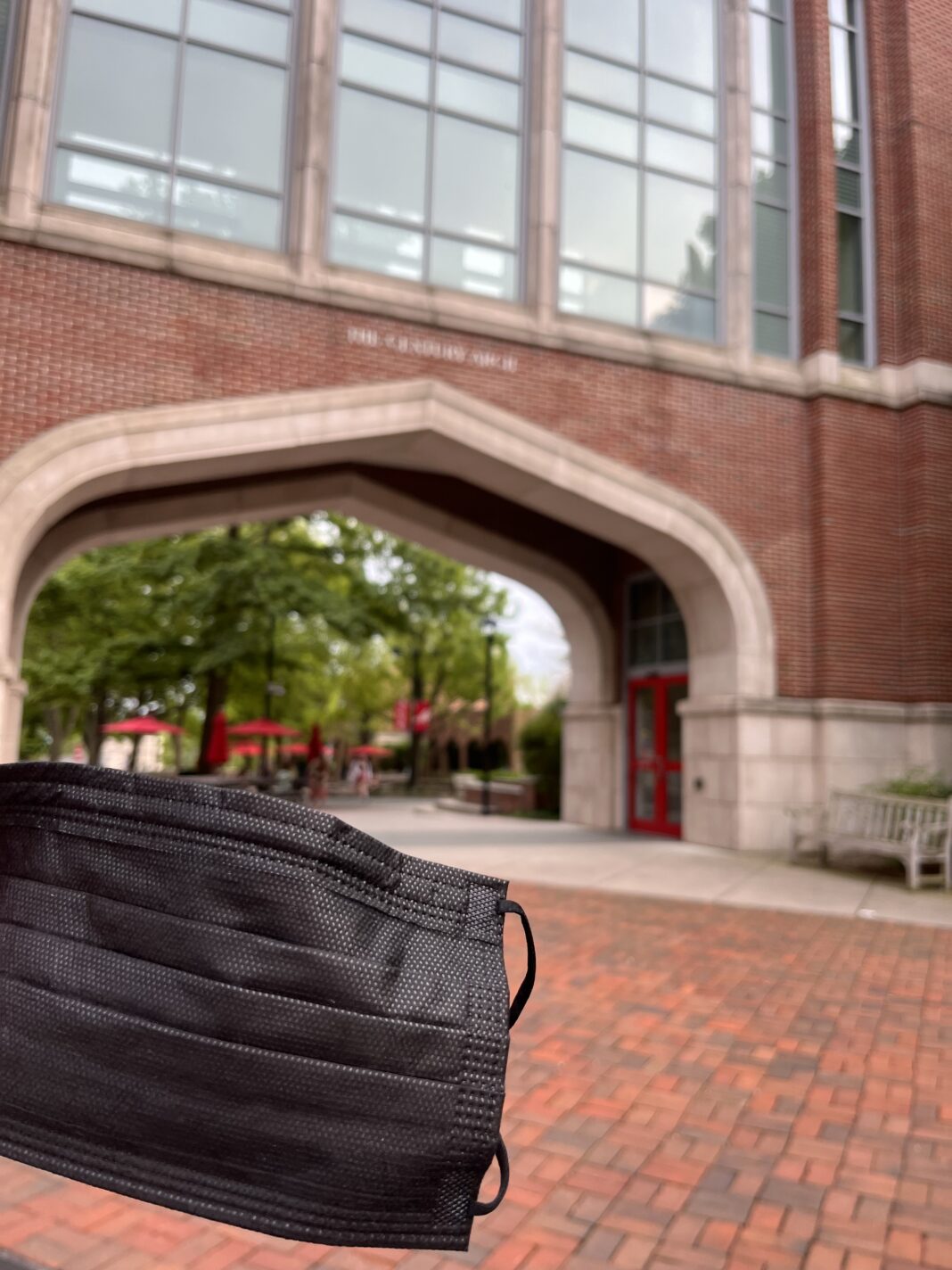Stress is a factor in everyone’s everyday lives, how we handle that stress is something many people may struggle with whether it’s school stress, work stress, relationship stress or nearly any kind of stress. But in 2020, many students were forced to grapple with a completely unique stressor–dealing with a global pandemic while starting their first year of college. A 2020 study from Texas A&M University claims that out of 195 participants, 138 (71%) showed that their stress and anxiety levels had increased due to the COVID-19 pandemic. 39 participants (20%) indicated it remained the same and 18 students (9%) mentioned that the stress and anxiety had actually decreased. Muhlenberg’s class of 2024 had a lot to face in the first couple months of school. They had no orientation, nowhere to go (not even class), and no activities to be involved in. The silence was deafening on campus.
On top of that, the campus rules put in place to reduce the spread of COVID created a divide with some students creating snitch lists, Instagram accounts exposing individuals who didn’t wear their masks and students getting kicked off campus from the college personalized strike system. The snitch list was a list created by students on campus who submitted any photos where students’ noses were showing or if their masks weren’t on correctly. Many students interpreted the list as an invasion of students’ privacy and created a toxic dynamic between the student body where students were turning against each other. “There were kids creating lies to get sports teams shut down,” said Lauren Griggs ’24, “they were creating false accusations of rule breaking.”
In the spring of 2022, The Weekly reported that an Instagram page associated with Muhlenberg posted a picture of the football players with their masks under their noses while they were at a wrestling match. Students on campus were commenting horrible things on the Instagram account which divided the school even more two years later. The college strike system was a set of rules created by the dean of students and Muhlenberg faculty for the students to maintain COVID-19 rules to stop the spread of the virus on campus. The strike system was created to keep the students safe but instead it produced a divide on campus that was tense and intimidating, concerning students and their parents. If things couldn’t get worse and more uncertain, there was also the Trump/Biden election resulting in rage on campus from both political parties creating a toxic environment for the students and the staff. The class of 2020 was suffering from a loss of milestones, having to miss graduation, prom and the parties to celebrate their college success.
In 2020, college students faced new versions of stress, anxiety and depression as they were isolated from the world and experiencing an unknown moment in history. While 2020 was arguably a stressful year for everyone, for those on college campuses, managing the stress was especially challenging as many were separated from their support systems at home. How did Muhlenberg help students cope with the mental health challenges during the pandemic?
As in-person counseling services became limited or unavailable due to lockdowns and social distancing rules, many colleges and universities transitioned to offering virtual counseling sessions. This allowed students to continue accessing mental health support remotely. What did Muhlenberg College counseling services look like during COVID-19 in 2020? “My partner was working in a medical facility every day facing the dangers of COVID-19. I don’t even remember dealing with it and then feeling the stress of my students as I was an isolation coordinator,” explained Michele Paules, director of student support. “So I was the person who was putting somebody in a room for 14 days back then by themselves having meals delivered to them.” Students and staff were dealing with the pandemic in their own ways while also trying to abide by the policies that were put in place. The staff was also trying to create an environment that wasn’t as toxic but also helped students manage their isolation from new friends. “As a student on campus I wasn’t necessarily worried about my grades as much as the social implications of dealing with the covid rules,” said Camryn Hartkern ’24. The college put so many rules in place that were meant for the safety of the students, but were often hard to follow. So students like Hartkern worried about getting in trouble for breaking the rules. “I did ultimately get in trouble after I broke a rule three times, by that point I was sent home from campus for the remainder of the semester,” said Hartkern. “One of my violations was going into the wrong dorm building, another violation was not wearing a mask in a photo that one of my friends took, and distrust of friends.”
“Human touch is just one of many effective stress reduction strategies,” explains Silvestri. With COVID rules stating that people had to be five feet away from each other, how were students able to feel safe and comfortable on campus? The ability to be social and be around friends is essential for human nature. Since classes were online and there were no college activities to attend to, how did college students maintain their happiness and well being? “We definitely got to meet new friends but the strike system prohibited our ability to get close with one another and do activities and it got really lonely at times,” said Phoebe Unger ’24. “We didn’t get that full freshman college experience because classes were online.” The COVID-19 pandemic for college students has affected mental health, academic success, graduation rates, and community engagement. Acknowledging the stress that the pandemic brought to college students allows for promoting equity, retention, and a new sense of community within the college setting.






















